This easy park and
grab cache was hidden to introduce geocachers to another one
of my hobbies, (Beer
Can Collecting).
The cache is a small container located at the Georgia Welcome
Center and can only be accessed from the West bound side of
I-20. It contains a log book and may have room for a few very
small trade items. Be aware of muggles in the area to avoid
getting this cache discovered by
non-cachers.
********************************************************
I collect mostly pre-1960's
Flat Tops with Opening Instructions as well as Cone Top Beer Cans.
I am always looking to add new cans to my display shelf, and I
would love to hear if any other beer can collectors find this cache
that share both of my hobbies.
********************************************************
The pictures below are of a fellow Beer Can
Collectors display of Opening Instructional (O/I) Flat Top Beer
Cans.
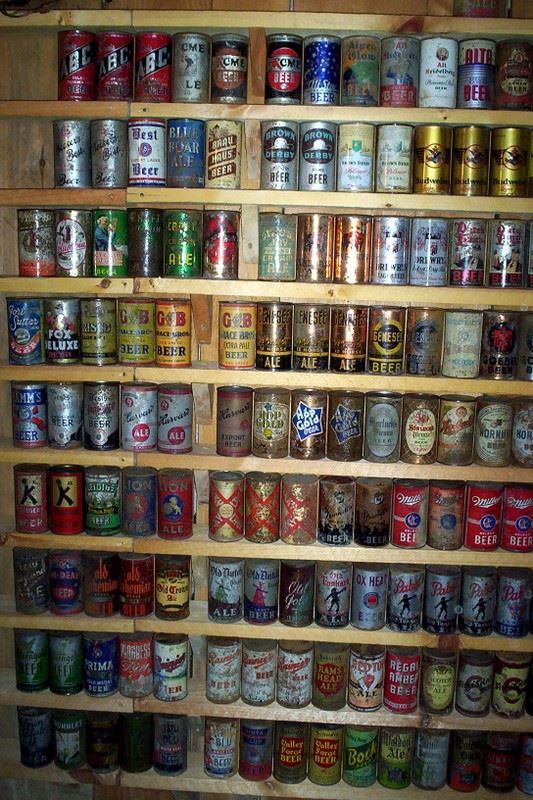
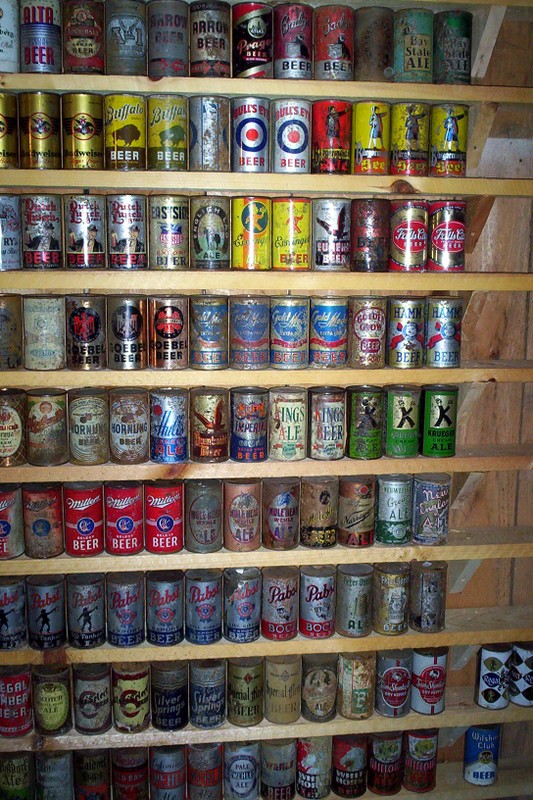
The information below is
provided by the Brewery Collectibles Club of America® website at
www.bcca.com
Beer Can
History
The first beer cans:
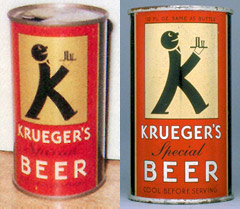
The "official" birthday of the beer can is
January 24, 1935. That's the day cans of Krueger's Finest Beer and
Krueger's Cream Ale first went on sale in Richmond, VA. But the
beer can really made its debut some 14 months earlier - just before
the repeal of Prohibition. American Can Company had engineered a
workable beer can. By the end of that month, American had installed
a temporary canning line and delivered 2,000 Krueger's Special Beer
cans, which were promptly filled with 3.2% Krueger beer - the
highest alcohol content allowed at the time. Krueger's Special Beer
thus became the world's first beer can. The 2,000 cans of beer were
given to faithful Krueger drinkers; 91% gave it thumbs up, and 85%
said it tasted more like draft than bottled beer. Reassured by this
successful test, Krueger gave canning the green light, and history
was made.
A photo of two Krueger Special cans appeared in the December 28,
1933 issue of Brewer's News, but no current example has been
positively verified to exist.
The can has seen several stages of evolution since that time. The
major distinct types are outlined below. Note that there are
several different types within each major category (low profile,
high profile, j-spout, crowntainer and quart cone tops for
instance).
Flat Top
Style
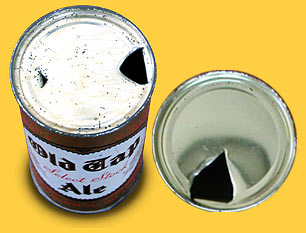
The name is self-explanatory. This steel can
style, first marketed by the Gottfried Krueger Brewing Company in
January 1935, and nationally by Pabst in June of the same year, was
in use up until about 1970. It's hard to imagine, in this day of
paper-thin aluminum containers, that the first flat-top cans
weighed in at nearly four ounces. No wonder that the device
designed to open them, the indispensable tool we call the
churchkey, was originally 5 1/2" long, 3/4" wide and 1/8"
thick!
Cone
Top Style

Left to right: Low profile,
j-spout, crowntainer and high profile cone top
styles.
Cone-top cans, so named because of their funnel-like tops, entered
the picture in September 1935, when the G. Heilemann Brewing
Company of La Crosse, WI first marketed them. Schlitz was the first
national brewer to follow suit. This was a style that appealed to
smaller brewers because cone-top cans could be filled on existing
bottling lines. By 1960, though, the big nationals had driven many
of those smaller brewers out of business and the cone-top era came
to an end.
There are four basic types of cone-top cans. Low Profile, High
Profile and J-spout cans are all three-piece cans. The difference
is mostly in the height of the cone or spout. The fourth type, the
Crowntainer, has a one-piece body attached to a concave bottom.
Pull Tab or Tab Top
Style

Some of the earliest pull
tabs, know as "zip tops" literally had a tab, rather than a
ring, and displayed instructions on how to open
them.
The change that revolutionized the beer can came
in March 1963 when the Pittsburgh Brewing Company introduced its
flagship Iron City Beer in self-opening cans. You put your finger
into the ring and yanked and bingo, the can was open! Schlitz took
what it called the "Pop Top" national, and by 1965, some 75% of all
cans produced had an easy-open device. Pull tabs were around for a
little over 10 years, when they began to be replaced by the stay
tab.
Stay
Tab Style
Pull tabs were a beer drinker's dream and an
environmental disaster. Pets and wildlife died from ingesting them
- as did more than a few people who dropped them into a can of beer
and then accidentally choked on them. They wound up on beaches,
where children cut their feet on them. They littered roadsides and
damaged garbage disposals.
Stay tabs were the answer. Introduced in 1975 by the Falls City
Brewing Company of Louisville, KY, they stayed connected to the
can. Today, virtually all carbonated beverages are marketed in cans
with stay tabs.
About our
Hobby
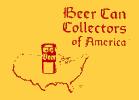
Beer can collecting probably began shortly after the very first
beer cans, from the Krueger Brewing Company, showed up in stores in
January 1935. Undoubtedly many beer drinkers were fascinated with
this revolution in packaging. They were nearly unbreakable, stacked
easily, chilled quickly, were colorful and — perhaps best of all —
hassle free and non-returnable. What's more they required the use
of another brand new collectible: the beer can opener.
Among the first beer collectibles were bottle caps, or crowns, an
innovation of the 1890s. A boomlet in breweriana availability began
in January 1920 when the onset of Prohibition forced hundreds of
breweries and thousands of saloons and taverns to close their
doors. Many owners and workers held on to advertising items that
were left behind. After Repeal, when a brewery would close, taverns
often sold or gave away the advertising items from that brewery
which they had displayed.
The modern era of the hobby began in St. Louis in 1970 with the
formation of the Beer Can Collectors of America (BCCA), now the
Beer Collectibles Club of America. Now breweriana enthusiasts had a
way to interface and to grow their collections. Other beer can and
breweriana collector clubs eventually formed, but the BCCA remains
the largest and most active of the hobby's organizations.
Think about the last time you visited a grocery or beverage store.
Have you ever looked at the different brands of beer on the shelves
and in the coolers? Have you been beguiled by the variety,
graphics, and colors of the packaging? Have you admired the neon
and lighted signs that advertise beer at your local watering hole?
Or had had a brewery-branded book of matches, napkin, or coaster
catch your eye? If you have and you have saved them, then you need
to join the BCCA.